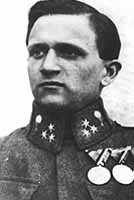
FeldwebelJulius Busa was an Austro-Hungarian World War I flying ace credited with five aerial victories during 1916. He was also notable for twice surviving direct hits by antiaircraft shells, saving his aircraft and aerial observer on both occasions. Busa scored all his aerial victories while engaged in general purpose missions in two-seater reconnaissance airplanes. His valor would be rewarded with Austria-Hungary's highest award for non-commissioned officers, the Gold Medal for Bravery. He also won three Silver Medals for Bravery—two First Class and one Second Class. Busa was killed in action by Francesco Baracca on 13 May 1917.

Friedrich Hefty, also referred to as Frigyes Hefty, was a World War I Austro-Hungarian flying ace credited with five confirmed and five unconfirmed aerial victories. His early interest in aviation led him to drop out of school in 1913 and become a glider pilot. When World War I began, he served first as an aerial observer, then as a pilot. He scored his first aerial victory as an observer, on 7 October 1915. Once he became a pilot, he claimed nine other victories, four of which were verified. On 22 August 1918, he became one of the first combat pilots to bail out using a parachute. Hefty ended the war with ten awards of the Medal for Bravery.

StabfeldwebelJohann Lasi was a World War I Austro-Hungarian flying ace, a Croat by ethnicity, credited with five aerial victories on 22 Aug 1916, while acting as an unauthorized rear gunner for Julius Arigi.
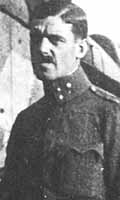
Oberleutnant Béla Macourek was a Austro-Hungarian World War I flying ace credited with five aerial victories. He entered the First World War as a mounted artillery officer. Two years campaigning brought him a Bronze Military Merit Medal. In mid-1916, he volunteered as an aerial observer. Over the next two years, he would progress to pilot, deputy commander, then commander while destroying five enemy airplanes. He was awarded the Silver Military Merit Medal and the Military Merit Cross.
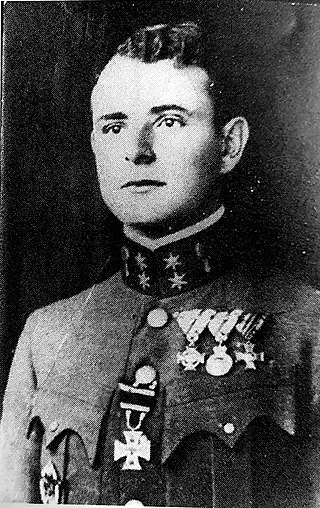
OberleutnantKarl Patzelt (1893-1918) was an Austro-Hungarian World War I flying ace credited with five aerial victories. Entering World War I as an officer in an infantry regiment, he distinguished himself during the first two years of the war. Decorated twice for valor, he was also honored by a rare early promotion in rank. A serious wound inflicted on 16 June 1916 hospitalized him. While recuperating, he transferred to aviation service. Trained and posted as a technical officer for Flik 29J in Romania, he volunteered to fly as an observer with Andreas Dombrowski. On their missions, Patzelt would benefit from Dombrowski's tuition as a pilot, while downing two enemy aircraft with the observer's gun. In October, Patzelt was transferred to the Italian Front to observe at the Battle of Caporetto. By mid-November 1917, he was flying with a fighter squadron, Flik 42J. He would score three more victories before being killed in action on 4 May 1918.

Lieutenant Alois Rodlauer (1897-1975) was a Austro-Hungarian World War I flying ace credited with five aerial victories. Originally a valorous infantry officer in 1915, 1916 and 1917, he turned to aviation in mid-1917. After pilot training, he managed to score five aerial victories between March and October 1918, despite two spells in hospital. Rodlauer returned to civilian life postwar, but returned to serve in the Luftwaffe from 1939 to 1945. He died a natural death in 1975. In 1983, aviation historians pieced together Rodlauer's combat record and realized he was an ace.
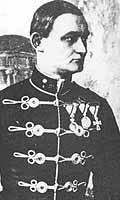
OberleutnantRudolf Szepessy-Sokoll Freiherr von Negyes et Reno was a Hungarian World War I flying ace credited with five aerial victories. He began his military career as a cavalryman as the war began in 1914. After winning the Silver Medal for Bravery and being promoted into the officers' ranks, he transferred to the Austro-Hungarian Aviation Troops in mid-1915 as an aerial observer. On 14 February 1916, while participating in a historic strategic bombing raid on Milan, he scored his first aerial victory. After shooting down another airplane and an observation balloon, Szepessy-Sokoll was transferred to a fighter unit after pilot training. After shooting down a pair of Macchi L.3s on 5 November 1917, he was killed in action the next day.

FeldwebelKarl Teichmann (1897–1927) was a Austro-Hungarian World War I flying ace credited with five aerial victories. His path to aerial victories began in 1915, when he joined the Austro-Hungarian infantry. His prewar training as an auto mechanic saw him assigned as an aviation mechanic on the Russian Front in February 1916. After eight months, he began pilot training, being awarded Austrian Pilot's Certificate 658 on 16 May 1917. Reassigned to the Italian Front, he scored five victories—three shared—between 26 September 1917 and 22 August 1918. Teichmann would survive the war and die of natural causes in Graz, Austria.

Karl Urban was an Austro-Hungarian World War I flying ace credited with five aerial victories.
Franz Wognar (1890-1943) was an Austrian-Hungarian World War I flying ace credited with five aerial victories. Wognar joined the Austro-Hungarian Armed Forces in 1913 as a trained mechanic. As the war broke out in 1914, he transferred to the Austro-Hungarian Aviation Troops. After pilot training, he was posted to fly two-seater reconnaissance aircraft over the early Battles of the Isonzo in northern Italy. Wognar flew reconnaissance, aerial photo, and artillery direction missions throughout 1916. Between 26 January and 16 September 1917, Wognar would score five victories. His fifth victory, over an Italian observation balloon, was extraordinary because very few pilots succeeded in balloon busting with a two-seater plane. Wognar was reassigned to test pilot duty. He ended the war with one Gold and four Silver awards of the Medal for Bravery.

Johann Frint was an Austro-Hungarian flying ace during World War I and professional soldier credited with six aerial victories while flying as an aerial observer. Crippled as an infantry officer in November 1914, Frint volunteered for the Austro-Hungarian Aviation Troops. He scored his victories on the Italian Front from the rear seat of two-seater reconnaissance aircraft with a variety of pilots, including a triple victory while being flown by his commanding officer, Heinrich Kostrba. Rewarded with the Order of the Iron Crown and Military Merit Medal, Frint became a mediocre pilot. He was entrusted with successive commands of a number of squadrons before dying in an airplane crash in 1918.
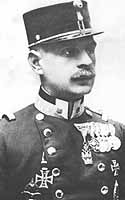
Hauptmann Karl Nikitsch was a professional soldier who served, in succession, the Austro-Hungarian Empire and the First Austrian Republic. His First World War service in the Austro-Hungarian Imperial and Royal Aviation Troops was marked by his abilities in organizing, staffing, and commanding flying squadrons. He also became a flying ace credited with six aerial victories Postwar, he commanded the Austrian Flugpolizei.
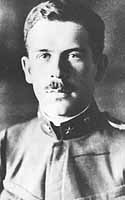
Oberleutnant Josef Pürer (1894-1918) was an Austro-Hungarian World War I flying ace credited with six aerial victories. A volunteer for the artillery when the war began, he fought for two years on the Russian Front. He was commissioned as an officer on 1 January 1916; later that year he transferred to the Austro-Hungarian Aviation Troops. He served as an aerial observer in northern Italy until early 1918. After scoring six aerial victories, he was trained as a fighter pilot by 11 July 1918. He was killed in action by Sidney Cottle on 31 August 1918.

OberleutnantOtto Jäger was an Austro-Hungarian World War I flying ace credited with seven aerial victories. He entered the war in 1914 as an infantry officer. By mid-1915, he had suffered three serious wounds fighting on the Russian Front, winning the Military Merit Medal, Silver Medal for Bravery, and the German War Service Medal. Invalided from front line service to training duties, Jäger trained as an aerial observer. Posted back to the Russian Front to fly with Fliegerkompanie 10 in early 1916, Jäger scored his fifth victory on 2 August 1916. He was awarded the Silver Military Merit Medal, the Military Merit Cross, and the German Iron Cross Second Class.
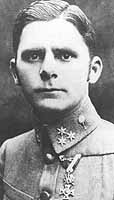
Hauptmann Josef von Maier was an Austro-Hungarian World War I flying ace credited with seven aerial victories. József Modory

OberleutnantAlexander Tahy was a Hungarian World War I flying ace credited with eight aerial victories while serving with the Austro-Hungarian Aviation Troops. He began the war as an artilleryman, winning the Silver Medal for Bravery in May 1915. In early 1916, he transferred to aviation duty as an aerial observer. Between 3 December 1916 and 26 June 1917, he was credited with five aerial victories for Fliegerkompanie 19, earning another three decorations. Having taught himself to fly, he transferred to a fighter unit, Fliegerkompanie 51J for his last three victories. On 7 March 1918, Tahy died in a flying accident. His greatest honor came after his death, when he was awarded the Knight's Cross of the Order of Leopold with War Decorations and Swords.

Károly Kaszala was an Austro-Hungarian World War I flying ace credited with eight aerial victories, thus winning his nation's highest honor, the Gold Medal for Bravery. Joining the military in 1914, he volunteered for aviation duty after recruit training. After pilot's training, he was posted to Fliegerkompanie 14, where he refused to fly his assigned aircraft. He was transferred for his insubordination; as he gained experience in his new unit, he and his observers managed to score three aerial victories from his reconnaissance two-seater. He was then upgraded to single-seat fighters, winning four more victories by the end of 1917. He was then posted to test pilot duties until war's end. In addition to the Gold Medal for Bravery, he had won three Silver Medals for Bravery and a German Iron Cross.
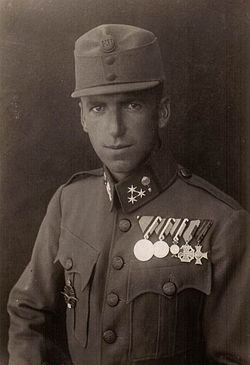
Feldwebel Stefan Fejes was an Austro-Hungarian flying ace credited with 16 confirmed and 4 unconfirmed aerial victories during World War I. By war's end, he had not only received numerous decorations, he had been personally promoted by his emperor.
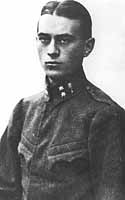
Stabsfeldwebel Ferdinand Udvardy was a Hungarian conscript into the military of the Austro-Hungarian Empire who became a flying ace credited with nine aerial victories. Upon the dissolution of Austria-Hungary, Udvardy became a Hungarian citizen, and in the aftermath of World War I, defended his new nation against invasion.

Oberleutnant Georg Kenzian Edler von Kenzianshausen followed his father's profession of arms, and served the Austro-Hungarian Empire during World War I. He became a fighter ace, scoring eight aerial victories. After the dissolution of Austria-Hungary in the aftermath of World War I, he became a citizen of German Austria and defended his new nation against invasion.




















